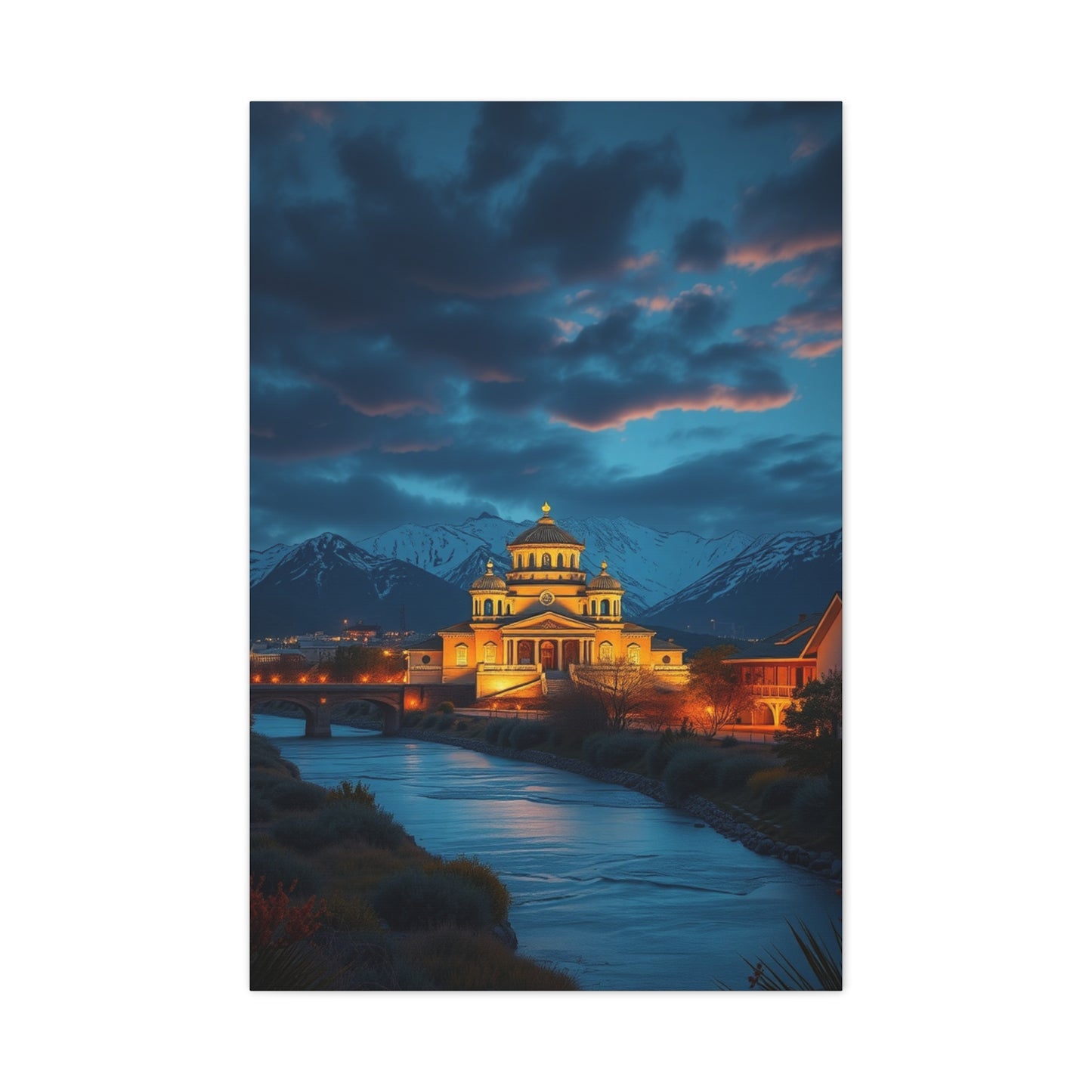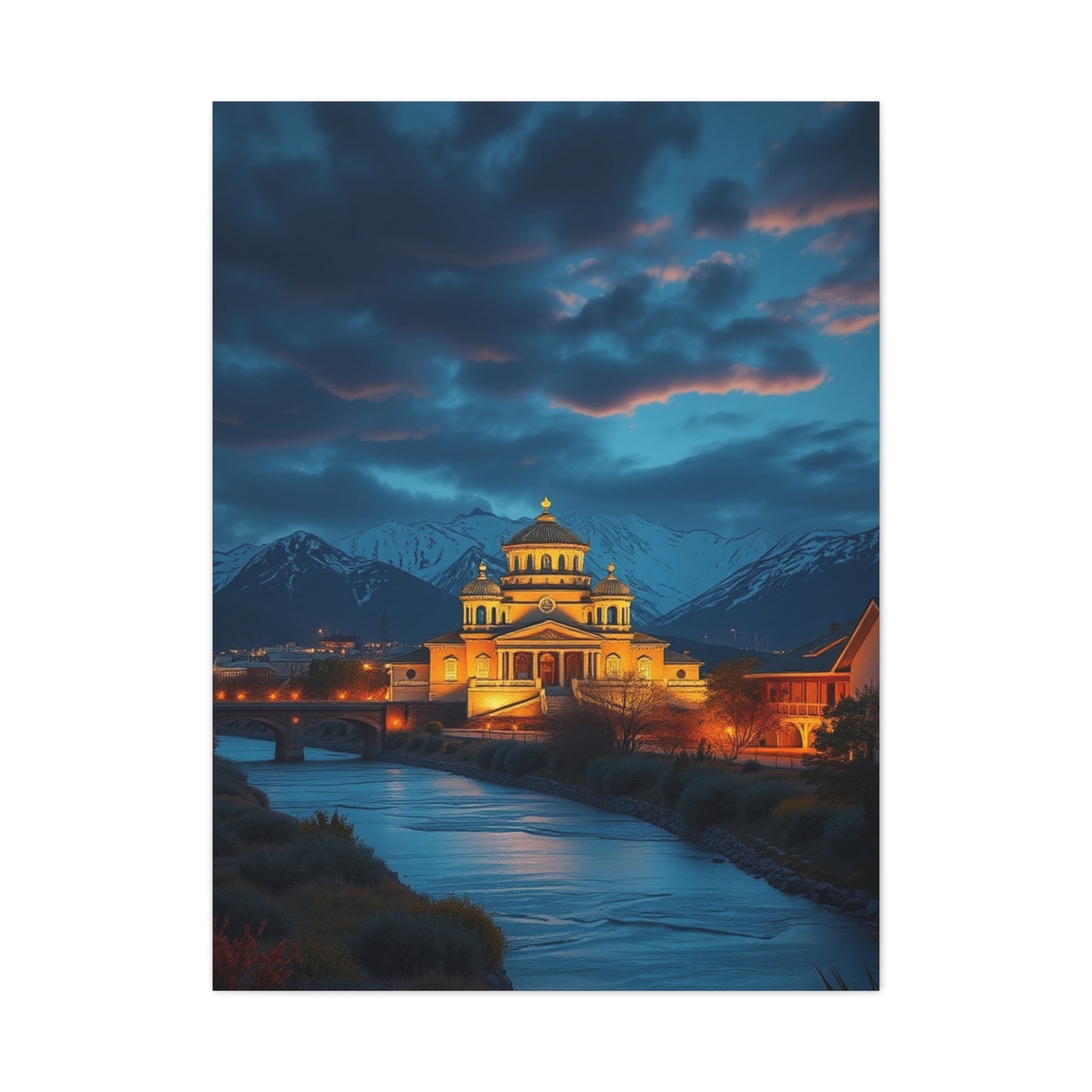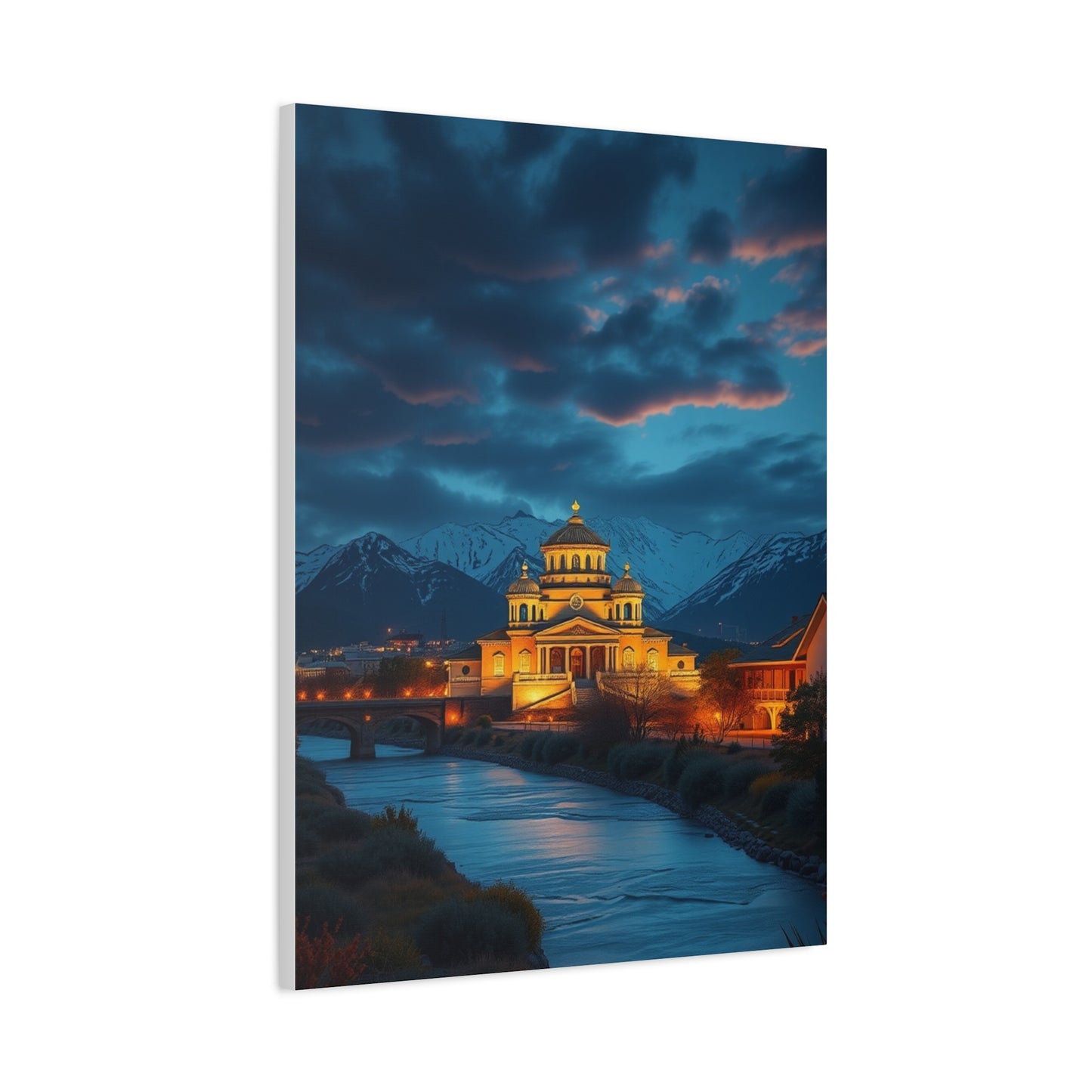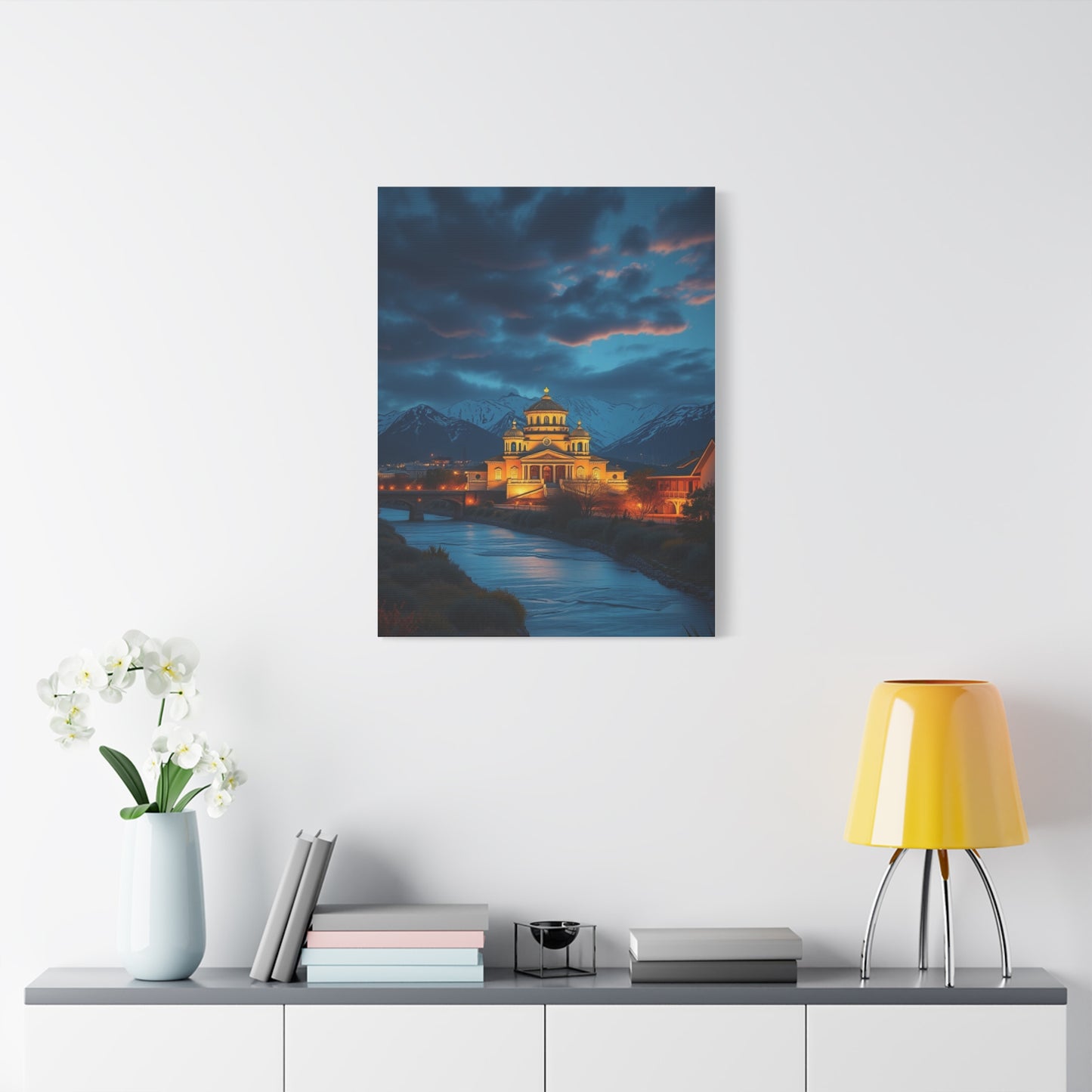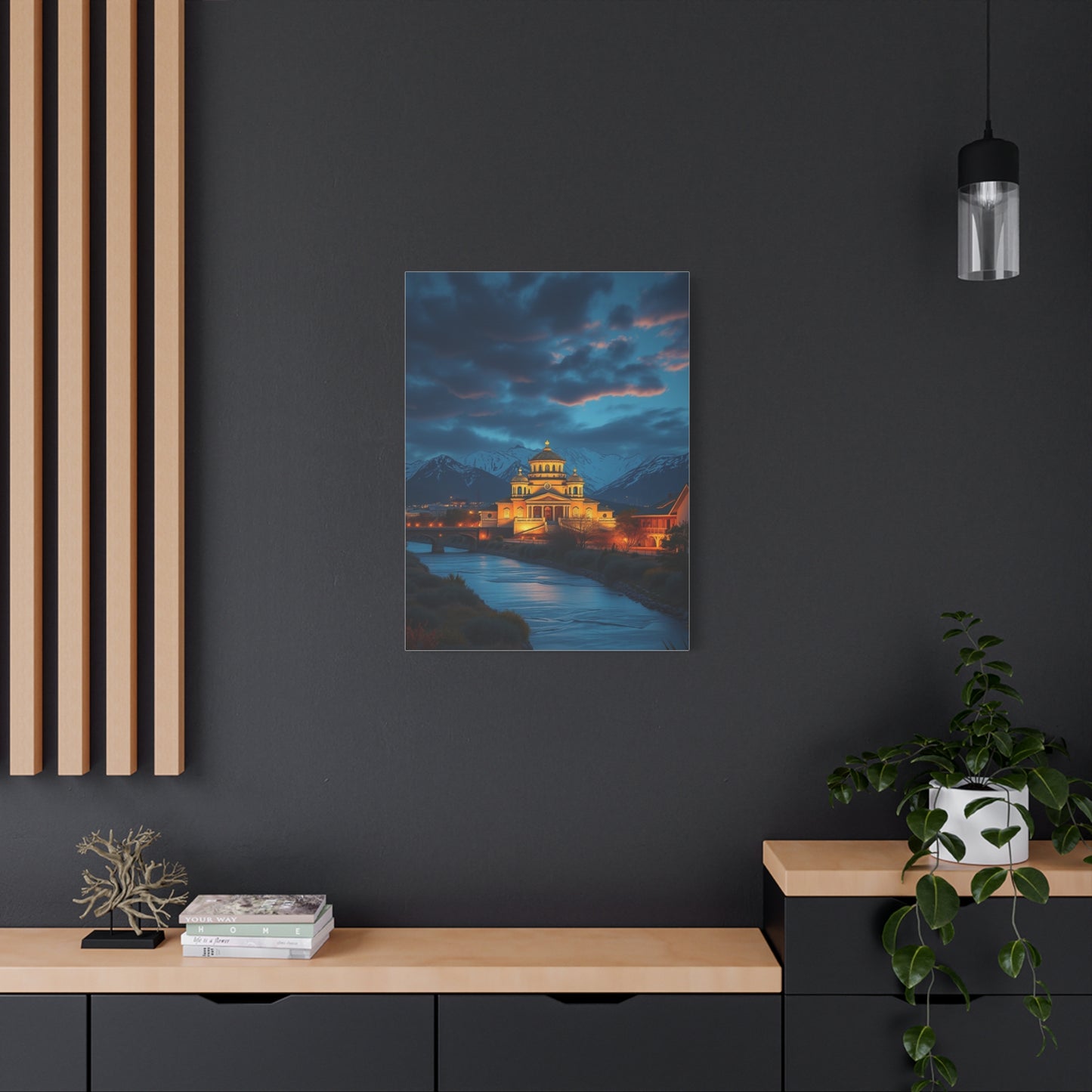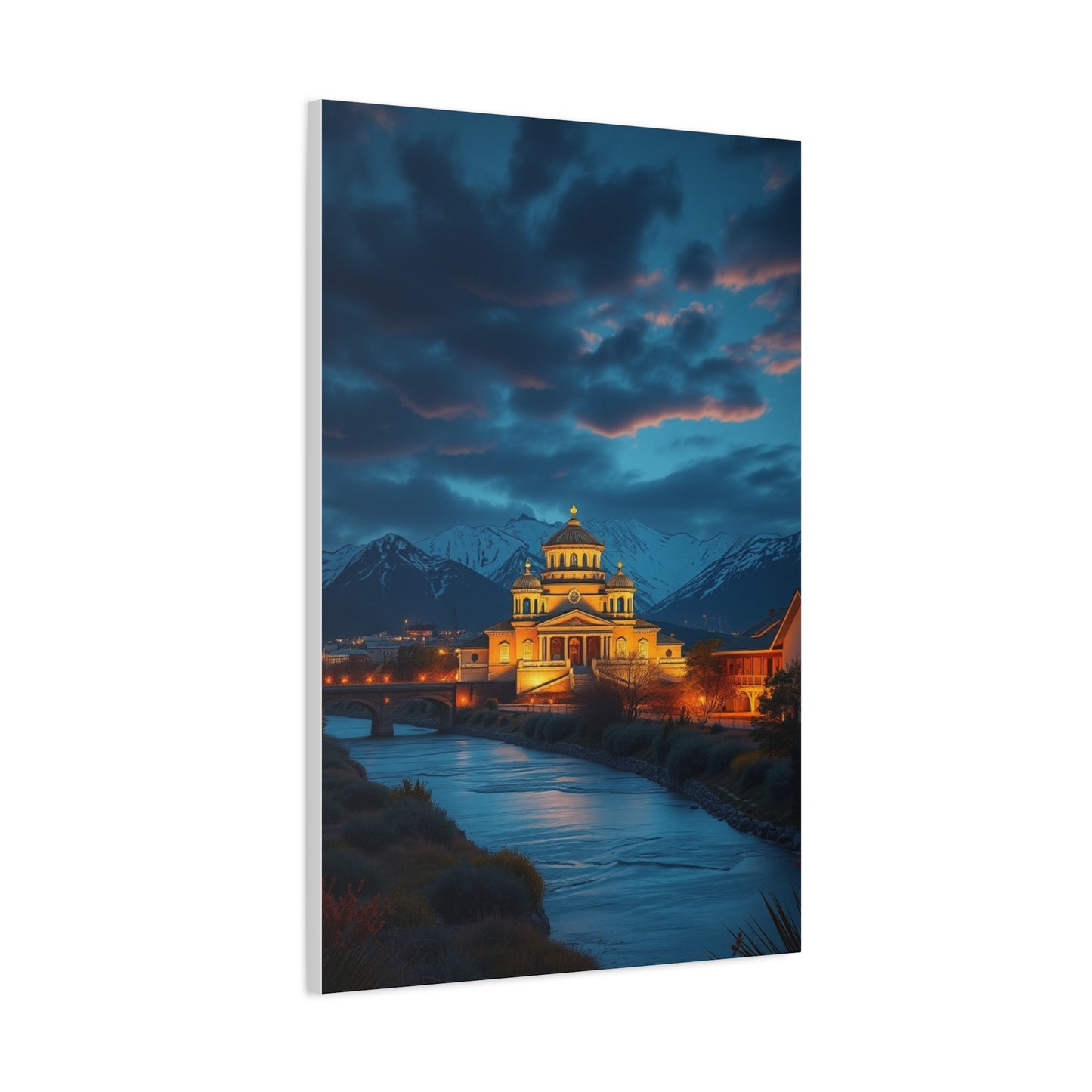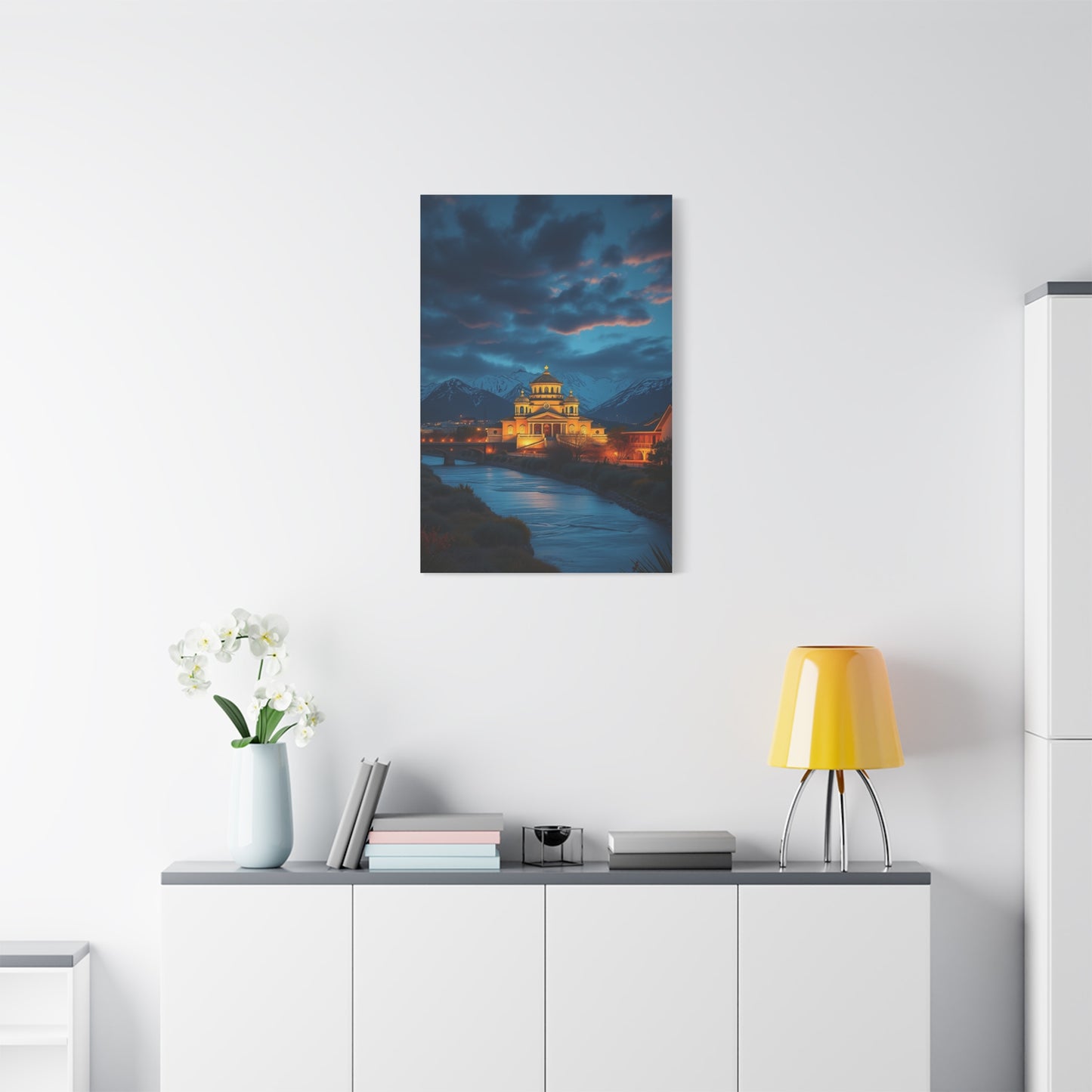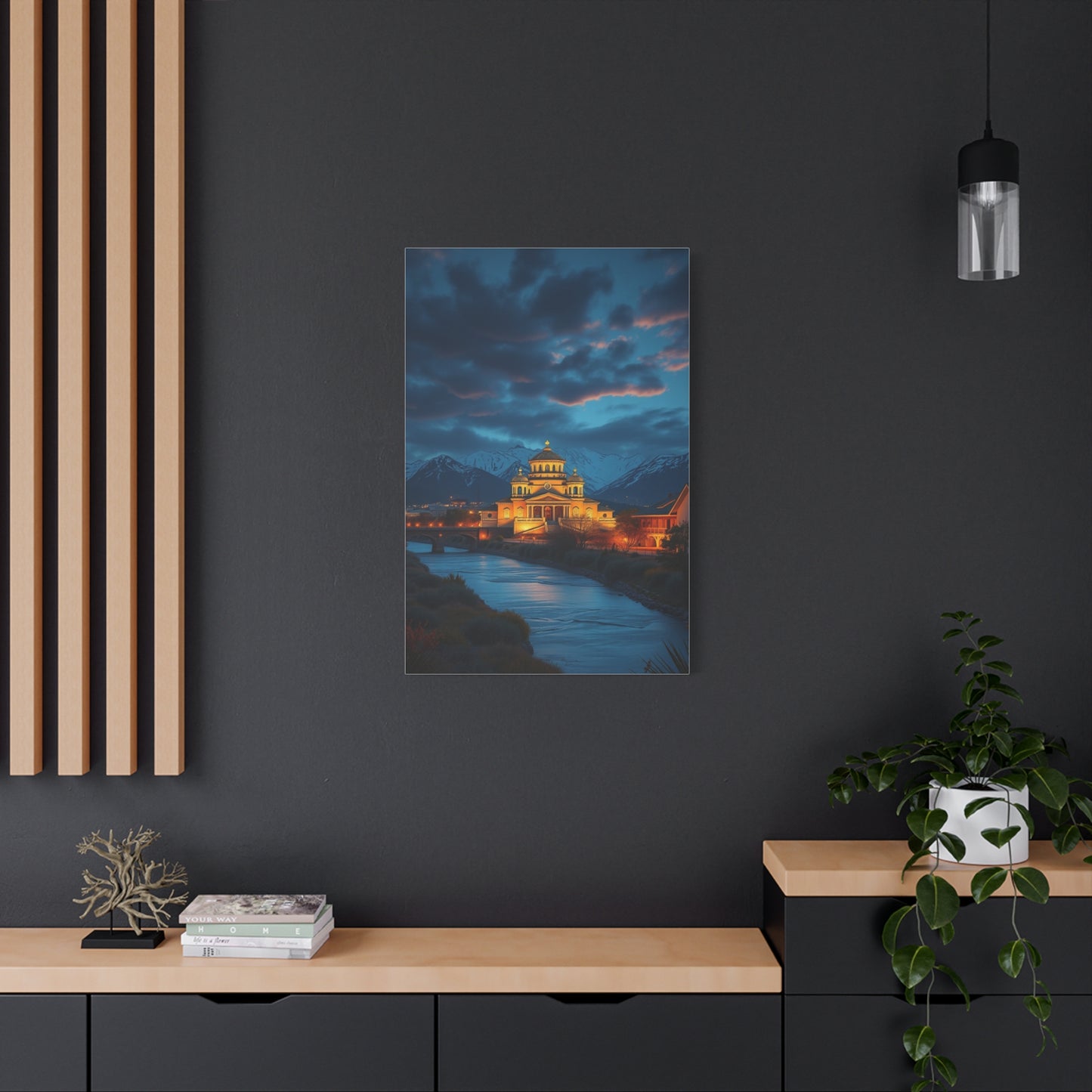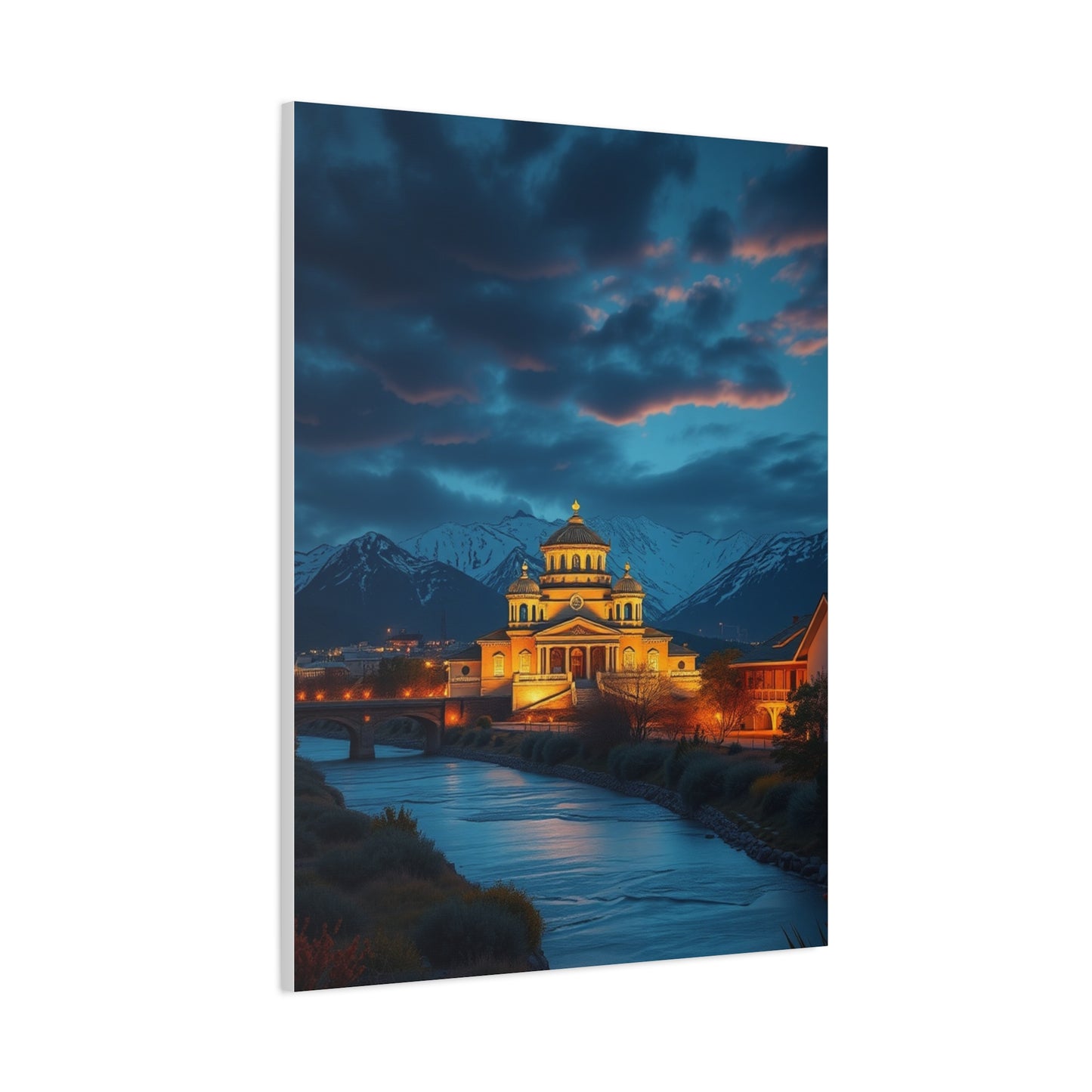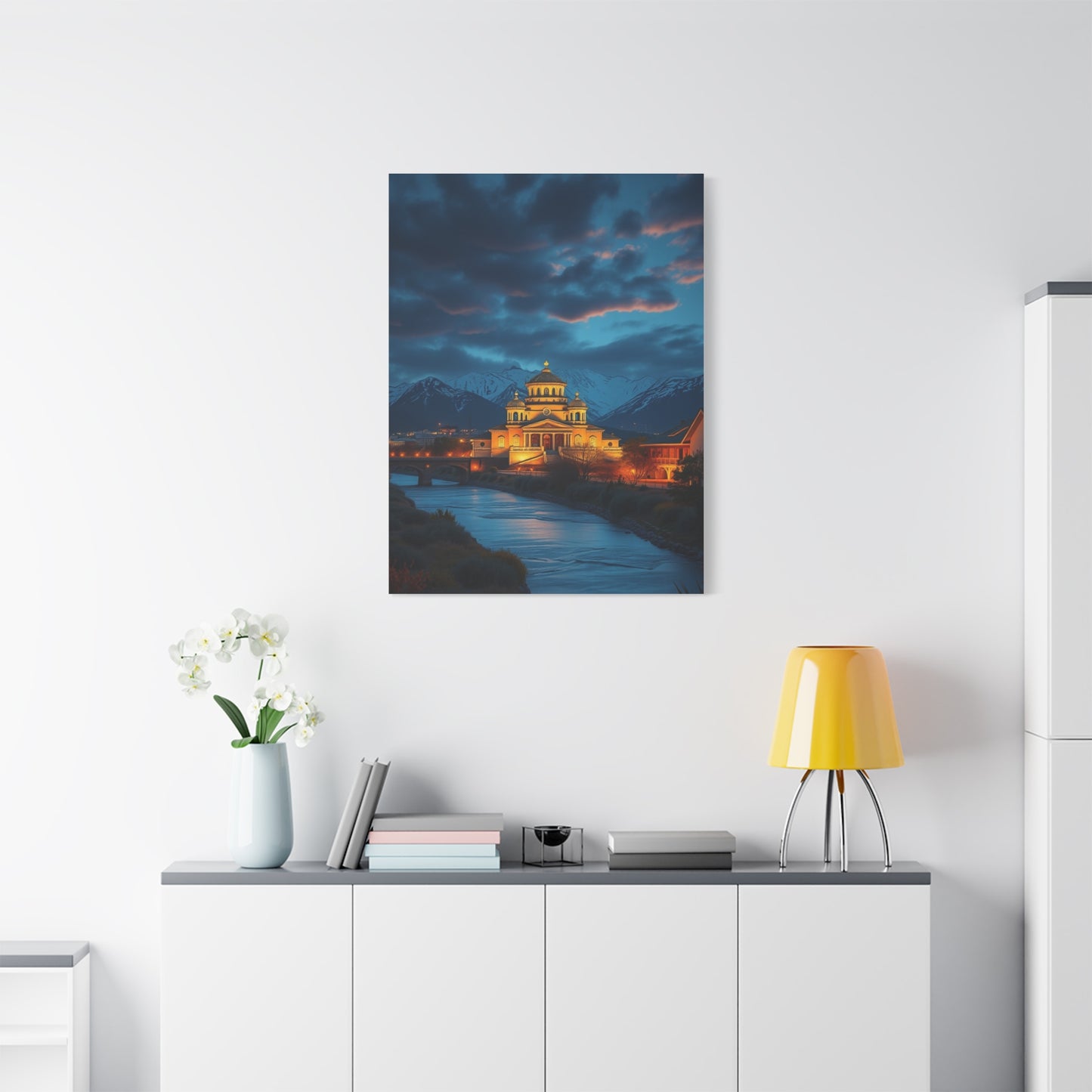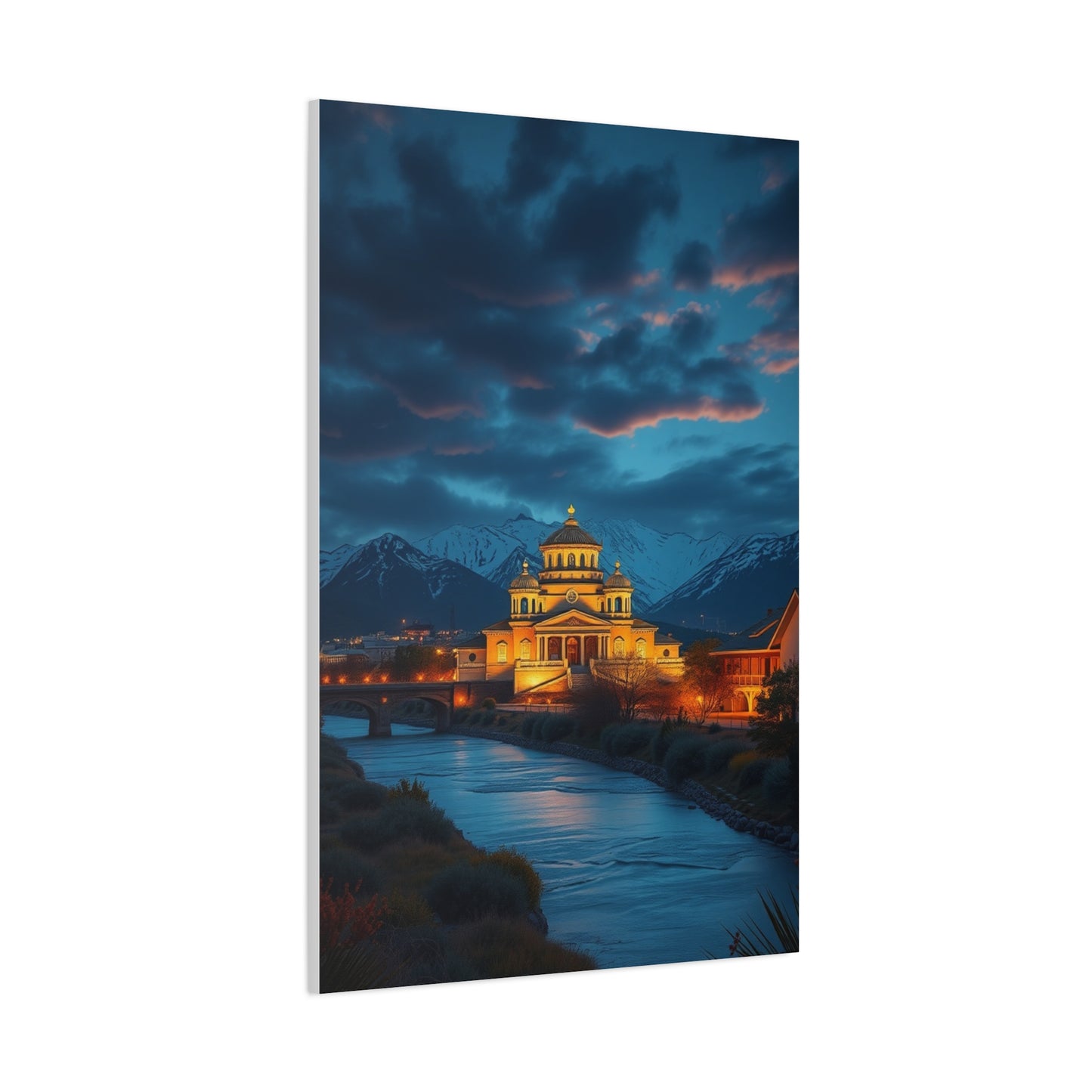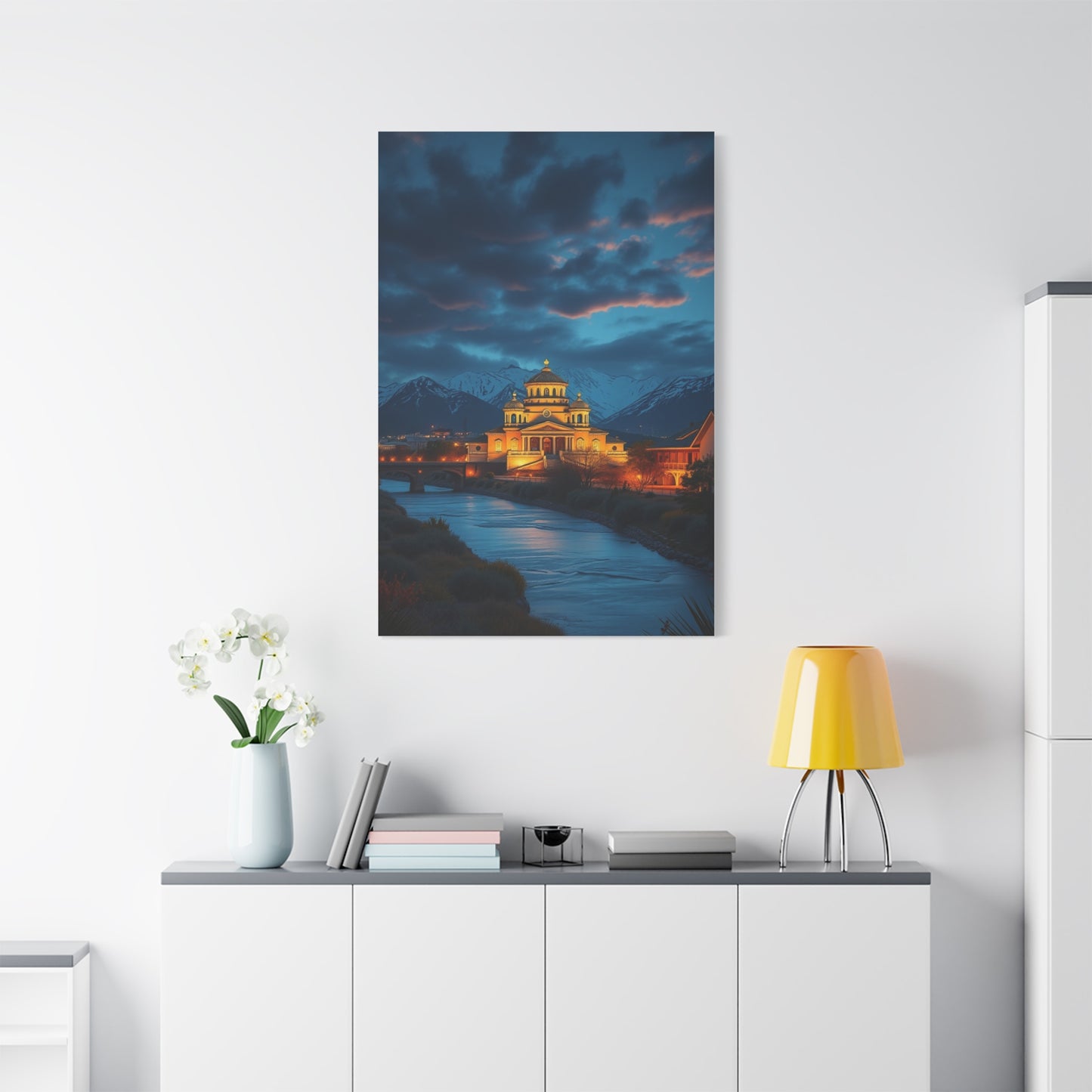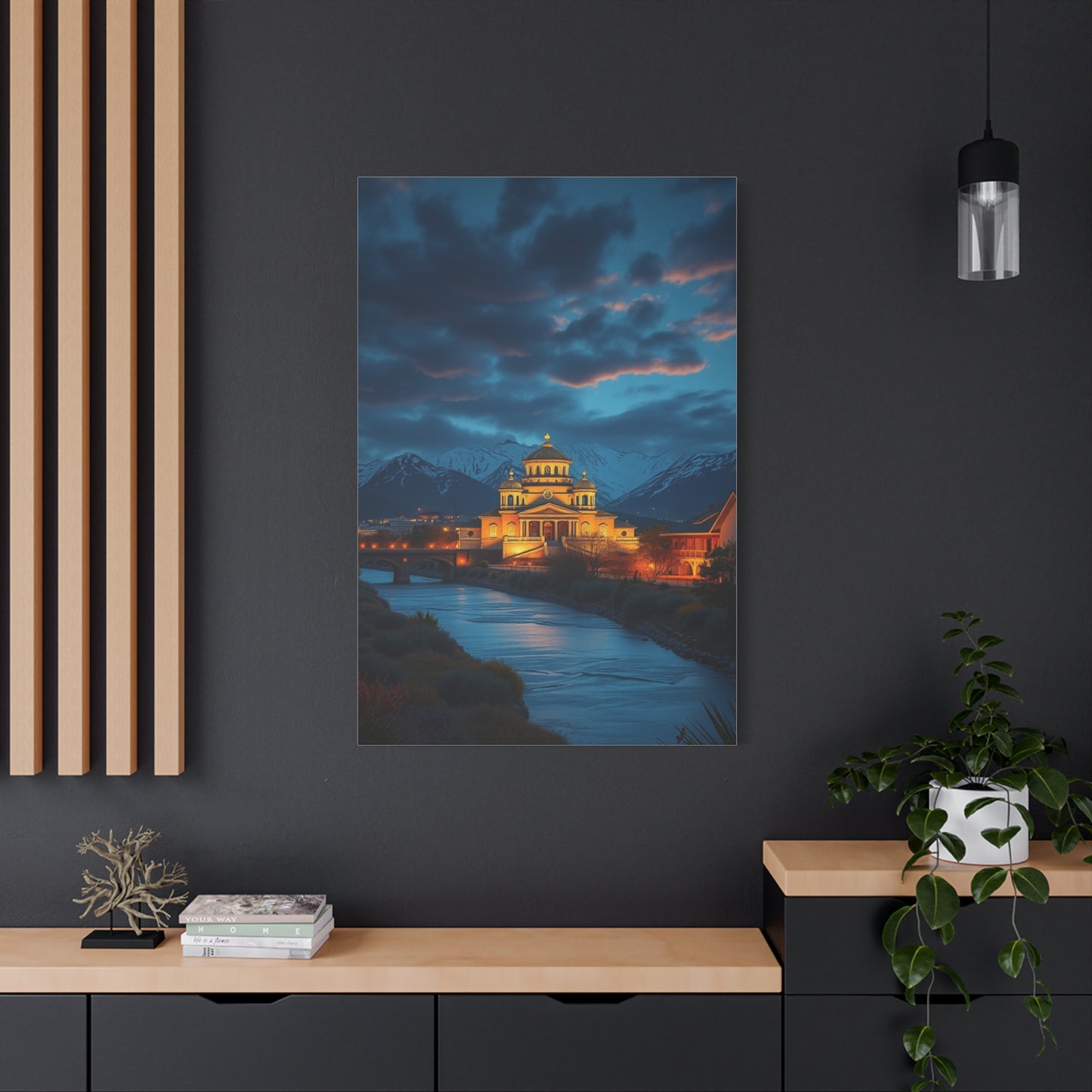Regal Terrain Portraiture Wall Art: Transforming Spaces with Nature's Majesty
In the vast realm of interior design, wall art serves as the soul of a space, a window into the values, dreams, and aesthetic sensibilities of its inhabitants. While trends come and go, one genre remains timeless in its appeal and profound in its impact: the depiction of nature. But beyond a simple landscape photograph or a pleasant floral painting lies a more specific and powerful category: regal terrain portraiture wall art. This is not merely art that shows a place; it is art that captures the very essence, character, and soul of a landscape, presenting it with the dignity, grandeur, and formality of a royal portrait. It is the visual translation of awe, a celebration of the Earth's most majestic features, and a way to bring a sense of the sublime into our daily lives. This comprehensive exploration will delve into every facet of this captivating art form, from its conceptual foundations and historical roots to its practical application in creating spaces that resonate with power, tranquility, and enduring beauty.
Unveiling the Concept: What is Regal Terrain Portraiture?
To truly appreciate the power of this art form, we must first dissect its name. The term "regal terrain portraiture wall art" is a descriptive constellation of ideas. "Regal" speaks to the mood. It implies a sense of majesty, nobility, grandeur, and magnificence. The art is not just pretty; it is stately and commanding. It evokes the feeling one gets when standing before a king or a queen, a sense of profound respect and wonder. This quality is often found in scenes of immense scale or dramatic natural phenomena. "Terrain" is the subject. This is the earth itself—the mountains, the canyons, the oceans, the forests, the deserts. It is the raw geography of our planet, with all its texture, form, and history.
The most crucial word here is "portraiture." A portrait is not a casual snapshot; it is a studied, intentional, and revealing depiction of a subject's character. When applied to terrain, it means the artist has moved beyond simply documenting a location. They have sought to capture its personality, its spirit, its "face." This could be a mountain at dawn, its stony ridges illuminated like the features of a wise elder. It could be a tempestuous sea, its waves captured in a way that expresses its wild and untamable spirit. The artist, whether a painter or a photographer, isolates the landscape and presents it as the primary subject, demanding our full attention. Finally, "wall art" is its function. This is not art destined for a gallery archive; it is designed to be lived with, to transform a living room, a bedroom, or an office into a space of reflection and inspiration. It is the final, tangible object that brings this grand concept into our homes. Therefore, regal terrain portraiture wall art is the practice of capturing and presenting a specific, character-filled landscape with a majestic and formal intensity, intended for display as a centerpiece of interior decor.
The Legacy of Grandeur: Historical Influences on Terrain Art
The desire to capture the majesty of the natural world is not a new phenomenon. The very concept of regal terrain portraiture owes a significant debt to historical art movements that sought to elevate the landscape from a mere background to a subject of profound philosophical and emotional weight. Before the 18th century, landscapes in Western art were often just settings for human or religious drama. This changed dramatically with the rise of the Romantic movement. Artists like Caspar David Friedrich in Germany or J.M.W. Turner in England began to paint nature as a force of sublime, terrifying, and divine power. Friedrich's "Wanderer above the Sea of Fog" is a quintessential example of terrain portraiture; the human figure is small, his back to us, serving only as a proxy for the viewer to contemplate the overwhelming, god-like majesty of the mountain peaks veiled in mist.
In the United States, the Hudson River School, led by painters such as Thomas Cole, Frederic Edwin Church, and Albert Bierstadt, took this concept to a continental scale. They were explorers as much as artists, venturing into the uncharted American West and returning with monumental canvases. Bierstadt's depictions of the Rocky Mountains and Yosemite Valley are perfect examples of regal terrain portraiture. These were not just paintings of mountains; they were declarations of a new, untouched natural kingdom, a "New Eden." The light was often dramatized, the scale exaggerated, and the compositions meticulously crafted to inspire awe and a sense of national pride. These artists treated the mountains, waterfalls, and canyons with the same reverence and attention to detail that a court painter would give to a monarch. This historical lineage provides the foundation for contemporary artists who use modern tools—high-resolution digital cameras, drones, and advanced printing techniques—to continue the tradition of capturing the royal, enduring character of the Earth's terrain.
The Emotional Resonance of Majestic Landscapes in Home Decor
Why are we so drawn to these powerful images? The answer lies deep within our psychology. The concept of "biophilia," popularized by biologist E.O. Wilson, suggests that humans have an innate and genetically determined affinity for the natural world. In our modern, urbanized lives, we are often disconnected from the very environments we evolved in. Regal terrain portraiture wall art acts as a powerful surrogate, a visual portal back to that world. Bringing a large-scale depiction of a majestic mountain range or a vast ocean into a home is more than just decoration; it is a form of psychological nourishment. Studies have shown that viewing scenes of nature, even in pictures, can reduce stress, lower blood pressure, and improve overall mood.
But the "regal" aspect takes this a step further. These images often evoke the emotion of "awe," the feeling of being in the presence of something vast, powerful, and greater than oneself. This experience can make us feel more humble, more connected to the world around us, and can even expand our perception of time, making us feel less rushed and more patient. In interior design, a piece of regal terrain portraiture wall art leverages this emotional power. In a living room, it can serve as a conversation starter, a focal point that grounds the space and silences the noise of the outside world. In an office, it can foster a sense of perspective and aspiration, reminding the viewer of the enduring world beyond the immediate tasks at hand. It creates an atmosphere of stability, tranquility, and profound, quiet strength, making the home not just a shelter, but a sanctuary.
Alpine Sovereignty: The Power of Mountain Terrain Portraiture
Among all the subjects of regal terrain portraiture, mountains are perhaps the most archetypal. They are the planet's crowns, immovable, ancient, and sovereign. A piece of wall art depicting a mountain is a statement of endurance, aspiration, and stoic beauty. The "portrait" aspect is critical here. It is not just any mountain, but a specific peak or range captured in its most characteristic light. It might be the sharp, dramatic granite of the Tetons, the icy, windswept summit of K2, or the serene, rolling majesty of the Scottish Highlands. The artist seeks to convey the mountain's personality: is it a brooding, formidable giant shrouded in storm clouds, or a benevolent monarch glowing in the pink light of dawn?
In a home, alpine portraiture creates an undeniable anchor. A large-scale photograph of a snow-capped peak above a fireplace or behind a sofa imbues the room with a sense of stability and permanence. The vertical lines of the peaks draw the eye upward, enhancing the perceived height of the room and adding a senseof aspiration. The color palettes, often featuring cool blues, stark whites, and deep, rocky grays, can bring a calming, sophisticated, and refreshing energy to a space. This type of regal terrain portraiture wall art is ideal for rooms intended for focus, reflection, or quiet conversation. It serves as a constant, silent reminder of time, resilience, and the quiet power that comes from standing firm. It is, in essence, a portrait of stillness and strength, a grounding force in our fast-moving lives.
Oceanic Kingdoms: Capturing the Stately Power of the Sea
If mountains represent the Earth's steadfast sovereignty, the ocean represents its dynamic, untamable, and infinite power. Regal terrain portraiture wall art focused on the sea captures a different kind of majesty—one of motion, depth, and limitless expanse. The "portrait" of an ocean is not static; it is a frozen moment of its eternal dance. This could be the awesome, terrifying beauty of a massive wave cresting, its form captured with such detail that every droplet of spray is a jewel. It could be the profound, royal-blue stillness of the open ocean at twilight, its horizon a single, perfect line dividing the world in two. Or it could be the dramatic interplay of light and water as storm clouds part, casting a divine spotlight on the churning surface.
In interior design, oceanic art brings a profound sense of scale and perspective. An artwork depicting a vast, open sea can make a small room feel larger, as if the wall itself is opening up to the horizon. The dominant blue hues are inherently calming and associated with tranquility and clarity of thought, making this art form perfect for bedrooms, bathrooms, or any space dedicated to rest and rejuvenation. However, a more dramatic piece—a stormy sea, for instance—can add energy, drama, and a senseof healthy respect for nature's power. It speaks to a different kind of regality: the wild, raw, and uncontrollable sovereignty of the planet's lifeblood. This type of regal terrain portraiture wall art connects us to the primal, rhythmic pulse of the planet, offering both serene escape and thrilling drama.
Enchanted Realms: The Noble Spirit of Forest Wall Art
Forests are the Earth's cathedrals. To step into an old-growth forest is to step into a living, breathing realm of profound antiquity and quiet wisdom. Regal terrain portraiture wall art that focuses on woodlands captures this unique sense of enclosed majesty. The "portrait" here is one of light, depth, and life. The artist's challenge is to capture the spirit of the forest: is it a high-canopied redwood forest, where colossal, ancient trunks rise like the pillars of a natural temple? Is it a misty, ethereal birch grove, its white trunks creating a serene, graphic pattern? Or is it a dense, mossy rainforest, teeming with a thousand shades of green, a portrait of life's relentless and complex abundance?
The key element in forest portraiture is often light. The way sunlight filters through the canopy, creating dappled patterns on the forest floor or illuminating the mist between the trees, is what gives the scene its magical, noble quality. In a home, this art can completely transform the atmosphere. A large piece of forest wall art can act as a "window" to a place of sanctuary and refuge. It brings the outside in, fostering a senseof calm, healing, and connection to life. The predominant green and brown tones are grounding and nurturing, excellent for living rooms, reading nooks, or bedrooms. This type of regal terrain portraiture wall art does not shout; it whispers. It invites the viewer to step in, to wander, and to breathe more deeply, offering a daily escape into an enchanted, protected, and noble realm.
The Austere Beauty of Desert Majesty in Art
Deserts are often misunderstood as empty, lifeless voids. In reality, they are landscapes of subtle, profound, and resilient beauty. Regal terrain portraiture wall art that captures the desert finds majesty in its austerity. The "portrait" of a desert is one of form, texture, and endurance. It is a celebration of survival and the stark, sculptural elegance of the Earth. The artist might focus on the graceful, wind-carved dunes of the Sahara, their curves as sensual and elegant as a reclining figure. It could be the iconic, monumental sandstone buttes of the American Southwest, standing like ancient, red-rock castles against a turquoise sky. Or it might be the intricate, cracked patterns of a dry lakebed, a testament to the power of water and its absence.
The regality of the desert lies in its uncompromising character and its unique, warm color palette. Artworks featuring deserts bring incredible warmth and texture to a room. The rich terracottas, deep oranges, sandy beiges, and subtle purples of a desert sunset can make a cool, modern space feel more inviting and grounded. Desert portraiture often plays with scale, contrasting a vast, open landscape with a single, resilient plant or a distant, winding canyon. This art speaks of stillness, time, and clarity. It is perfect for minimalist spaces, where its stark forms and rich colors can be appreciated without distraction. It is a sophisticated choice that communicates a love for subtle beauty, a respect for resilience, and an appreciation for the profound, quiet majesty found in the world's most challenging environments.
Choosing the Medium: Canvas, Metal, and Photographic Prints
The material on which the regal terrain portraiture is presented dramatically affects its final impact. The choice of medium is as important as the image itself. A giclée print on stretched canvas is a classic choice. The subtle texture of the canvas lends a painterly, timeless quality to the art, even if it is a photograph. It diffuses light, resulting in a soft, non-glare finish that works well in brightly lit rooms. Canvas prints, especially those with a gallery-wrapped edge, have a substantial, traditional presence that enhances the "regal" feel. They feel like established, permanent additions to a space, echoing the great landscape paintings of the past.
For a more modern, striking, and luminous presentation, high-definition metal prints are an exceptional option. In this process, dyes are infused directly into a sheet of coated aluminum. The result is breathtaking. The colors are incredibly vibrant, the details are razor-sharp, and the image takes on an almost three-dimensional, backlit quality. Metal prints are waterproof and highly durable, making them suitable for areas like bathrooms or covered patios. The glossy finish makes the light and water in an image appear to dance, giving oceanic or misty mountain scenes an unparalleled sense of life and immediacy. For a more subdued, sophisticated, and traditional fine art feel, a photographic print on archival matte or luster paper, presented behind glass in a formal frame, is a perfect choice. This method highlights the artist's technical skill and is often the preferred choice for fine art photography, lending a museum-quality gravitas to the terrain portrait.
Painted Perspectives vs. Photographic Realism in Terrain Art
The path to capturing a terrain's portrait can be walked by two different kinds of artists: the painter and the photographer. Each brings a unique set of tools and a different philosophy to the task, resulting in distinct yet equally valid forms of regal terrain portraiture wall art. The painter is an interpreter. They are not bound by the literal reality of a moment. A painter can move a mountain, intensify a sunset, or conjure a mystical fog to better express the feeling and essence of a place. They build the image from scratch, stroke by stroke, allowing their own emotion and memory to infuse the canvas. A painted landscape can feel more timeless, as it is a composite of the artist's experiences rather than a single, captured instant. This allows for a deep, expressive, and often romanticized regality, where the artist's soul visibly communes with the landscape's spirit.
The photographer, on the other hand, is a witness. Their art is one of patience, timing, and technical mastery. They hunt for the perfect moment when the light, the weather, and the landscape align to reveal the terrain's true character. While post-processing allows for interpretation, the final image is fundamentally rooted in a real, specific moment in time. The power of photographic regal terrain portraiture lies in its breathtaking realism. The knowledge that this specific, incredible light actually happened, that this place actually exists, creates a different kind of awe. It is a testament to the planet's existing beauty. A high-resolution photograph can capture details—the texture of rock, the shimmer of ice, the mist from a waterfall—with a clarity that feels tangible. The choice between a painting and a photograph depends on the viewer's desire: do they seek a romantic, interpreted essence or a stunning, documented reality?
The Art of Presentation: Framing Your Regal Terrain Portraiture
A magnificent piece of art can be diminished by a poor presentation, just as a simple sketch can be elevated to heirloom status by a proper frame. Framing regal terrain portraiture wall art is a critical final step that defines its style and integrates it into your home. The frame acts as a formal boundary, a "window" that separates the majestic world within the art from the everyday world of your room. For a truly "regal" and traditional effect, a large, ornate frame in gold, silver, or dark, carved wood can be magnificent. This style of frame explicitly states that the artwork is important, a centerpiece, and connects it to the historical legacy of master landscape paintings. It pairs beautifully with paintings or canvas prints and works best in classic, traditional, or eclectic interiors.
However, for modern or minimalist spaces, a large, ornate frame can be overwhelming. In this case, a more contemporary approach is needed. A simple, thin "floater frame" is an elegant solution, especially for canvas. The canvas appears to "float" inside the frame with a small gap, creating a sophisticated, three-dimensional effect that doesn't compete with the image. For photographic prints behind glass, a simple, high-quality gallery frame in black, white, or natural wood provides a clean, sharp, and modern border that lets the terrain's portrait speak for itself. For metal prints, one of the most popular options is to "float" it on the wall with a hidden mount, requiring no frame at all. This frameless presentation gives the art a sleek, contemporary, and ethereal quality, as if the luminous image is hovering just off the wall. The choice of frame ultimately dictates the final "voice" of the artwork, from a classical proclamation to a modern whisper.
Commanding Attention: Using Large-Scale Art as a Focal Point
Regal terrain portraiture, by its very nature, often demands scale. While a small, framed print can be a lovely accent, the true power of this genre is unleashed when it is allowed to dominate a wall. A large-scale piece of wall art—anything from four to eight feet wide, or even larger—is not just an accessory; it is an architectural feature. It creates an immediate and powerful focal point that grounds the entire room. When you place a massive portrait of a mountain range over a sofa, or a vast ocean expanse on a dining room wall, you are making a bold, confident design statement. This single, oversized piece can often be all the "decoration" a wall needs, simplifying the room and creating a feeling of uncluttered grandeur.
The key to successfully using large-scale art is balance. The artwork should be proportional to the wall and the furniture. A good rule of thumb is for the art to be about two-thirds the width of the sofa or console table it hangs above. It should be hung at eye level, with the center of the image roughly 57 to 60 inches from the floor. This placement connects it to the human scale of the room, making it feel integrated rather than awkwardly high or low. Triptychs, where a single image is split across three separate panels, are another effective way to achieve a large-fsale impact. This technique adds a modern, rhythmic quality and can cover an even wider expanse, making it perfect for long, blank walls in hallways or large living spaces.
Mastering Atmosphere: The Critical Role of Light and Shadow
What separates a simple landscape photo from a "portrait" is often the masterful use of atmosphere. Light and shadow are the artist's most powerful tools for sculpting the terrain and imbuing it with emotion and a regal personality. The "golden hours," the short periods after sunrise and before sunset, are coveted by landscape artists for a reason. The light during this time is soft, warm, and directional. It rakes across the land, revealing every texture, ridge, and crevice, while casting long, dramatic shadows that add a sense of depth and mystery. This is the light that "paints" the landscape, turning a simple hill into a noble, glowing form.
Similarly, dramatic weather conditions are a source of regality. A storm breaking over a canyon, with dark, bruised clouds and a single, divine shaft of light, creates a portrait of immense power and drama. Mist and fog are other key atmospheric elements. They simplify a busy scene, obscuring the background and isolating the main subject—be it a single, towering tree or a mountain peak—making it appear more imposing and mysterious. An artist who has mastered atmosphere is not just showing you what a place looks like; they are showing you how it feels to be there in that specific, fleeting, majestic moment. When selecting regal terrain portraiture wall art, pay close attention to the light. Look for images where the light and shadow do more than just illuminate; look for where they define, sculpt, and give a soul to the landscape.
Curating a Cohesive Gallery of Natural Splendor
While a single, large-scale piece offers a powerful statement, a gallery wall allows you to tell a more complex story. Curating a gallery wall with regal terrain portraiture requires a thoughtful approach to ensure the result is a cohesive collection, not a chaotic jumble. The key is to find a unifying theme. This theme could be the subject itself: a collection of different mountain portraits, a series on coastal landscapes, or a study of forest interiors. By grouping similar subjects, you create a powerful visual exploration of a single concept, showing its many "faces" and moods.
Another popular theme is color. You could curate a collection of artwork that shares a dominant color palette—for example, the cool blues and whites of alpine and arctic scenes, or the warm, earthy tones of deserts and canyons. This creates a harmonious and sophisticated look, even if the specific subjects vary. A third approach is to group works by a single artist. This is an excellent way to showcase an artist's vision, as their unique style and perspective will naturally tie the different pieces together. When arranging the gallery wall, visual balance is crucial. You can opt for a structured, symmetrical grid for a formal and modern look, or a more organic, "salon-style" arrangement for an eclectic and dynamic feel. Using identical frames for all pieces is a simple trick to create instant cohesion, while mixing frame styles and sizes can add a layer of curated, personal charm.
Reflecting the Seasons: Art that Evolves with the Year
The "character" of a landscape is not static; it changes dramatically with the passing of seasons. Regal terrain portraiture that captures this seasonal splendor offers a unique way to connect with the cycles of nature. Each season bestows a different kindof regality upon the land. Autumn, for instance, is a season of fiery, noble celebration. A portrait of a forest ablaze in red, orange, and gold is a testament to nature's final, brilliant flourish before its winter rest. This art brings incredible warmth and vibrant energy to a space. Winter, conversely, offers a different kind of majesty—one of stillness, austerity, and stark beauty. A portrait of a snow-covered peak or a frosted, silent forest is a study in minimalism and resilience. The world is simplified to its essential forms, creating a feeling of profound peace, quiet, and clarity.
Spring landscapes are portraits of renewal and gentle power. The majesty here is in the vibrant, emerging life—the soft green of new leaves, the rush of a melting waterfall. It brings a feeling of hope, freshness, and new beginnings into the home. Summer is a portrait of nature in its full, lush, and powerful prime. The greens are deeper, the skies are vast, and the feeling is one of abundant, sun-drenched energy. Some homeowners even choose to rotate their regal terrain portraiture wall art with the seasons, replacing a cool, snowy scene with a warm, sunlit one as the weather changes. This practice keeps the home's decor feeling alive and in constant, graceful dialogue with the world outside the walls.
Beyond the Literal: Abstracting the Essence of Regal Terrains
Not all regal terrain portraiture is photorealistic. Some of the most powerful and sophisticated interpretations of the landscape are abstract. In abstract terrain art, the artist is not concerned with capturing the literal, physical appearance of a place. Instead, they seek to distill its very essence, its emotional core, and translate it into a language of color, texture, and form. A mountain's "regality" might be expressed not as a peak, but as a series of strong, upward-thrusting diagonal lines and a palette of cool, granitic grays and blues. The "majesty" of the ocean might be captured in broad, horizontal sweeps of deep indigo and tumultuous, textured white, conveying its vastness and energy without depicting a single wave.
This abstract approach allows for a more personal and interpretive experience for the viewer. The artwork becomes less of a "window" to a specific place and more of a "mirror" reflecting the viewer's own feelings and associations with nature, power, and tranquility. Abstract terrain art is exceptionally well-suited to modern, contemporary, and minimalist interiors. It provides the emotional resonance and organic connection to nature that a landscape offers, but in a non-literal, highly stylized form that complements clean lines and uncluttered spaces. It is a bold choice that speaks to a confidence in design and a desire to engage with art on a purely emotional and aesthetic level, capturing the soul of the terrain rather than its face.
Harmonizing Grandeur: Majestic Art in Minimalist Design
At first glance, the concepts of "regal grandeur" and "minimalist design" might seem contradictory. Minimalism champions simplicity, "less is more," and a lack of ornamentation. Regal art is, by definition, grand, commanding, and powerful. However, it is precisely this contrast that can create a breathtakingly beautiful and balanced interior. In a minimalist space—characterized by neutral colors, clean lines, and uncluttered surfaces—a single, large-scale piece of regal terrain portraiture wall art becomes the undeniable star of the show. There is no visual competition. The eye is drawn immediately and irresistibly to the artwork.
This technique is all about a "less but better" philosophy. Instead of filling walls with many small, insignificant items, the minimalist approach advocates for one or two pieces of truly exceptional quality and impact. The "regal" artwork provides the soul, warmth, and emotional focal point that a purely minimalist room can sometimes lack. It prevents the space from feeling cold or sterile. The key is to maintain the minimalist ethos in the presentation. A metal print floated off the wall or a canvas in a simple, thin floater frame respects the clean lines of the room. The artwork's color palette can also be used to inform the few accent colors in the space—for example, the deep blue from an ocean print could be echoed in a single cushion or throw, creating a subtle, cohesive, and highly sophisticated design.
The Ethereal Canopy: Skies and Atmosphere in Terrain Portraiture
In any great landscape, the sky is never just a background; it is an active participant, the source of light, and the "crown" of the terrain. In regal terrain portraiture, the sky often plays a leading role in establishing the majestic mood. An artist capturing a terrain's portrait is just as much capturing a portrait of the atmosphere above it. A vast, clear, high-altitude blue sky over a desert canyon speaks of clarity, emptiness, and infinite space. A sky filled with dramatic, churning storm clouds over a mountain range is a portrait of conflict, power, and impending drama. The regality of the scene is amplified by this celestial turmoil.
Some of the most sought-after forms of terrain portraiture are those captured at the moments when the sky is at its most spectacular. Sunrise and sunset images paint the landscape in fleeting, royal colors—deep purples, fiery oranges, and soft pinks—that feel otherworldly and divine. Astrophotography, which captures the terrain under a canopy of the Milky Way or the dancing lights of the aurora, presents the landscape in a cosmic context. This art connects the terrestrial majesty of the Earth with the infinite majesty of the universe. It fosters a profound senseof wonder and perspective. When choosing your art, do not underestimate the sky. Look for how it interacts with the land, how it sets the emotional tone, and how it completes the "royal" character of the portrait.
Discovering and Commissioning Your Unique Artwork
Finding that perfect piece of regal terrain portraiture wall art, the one that speaks directly to your soul, is a deeply personal journey. While mass-market retailers offer accessible options, seeking out unique work from independent artists offers a connection and a story that cannot be replicated. Online art marketplaces and gallery websites are a fantastic starting point, allowing you to browse thousands of artists from around the world. You can filter by medium, subject, and color, and often discover emerging photographers and painters whose work has a fresh, unique perspective. Attending local art fairs and visiting galleries in person provides the invaluable experience of seeing the artwork up close, appreciating its true scale, texture, and presence in a way a digital screen cannot convey.
For a truly personal and one-of-a-kind piece, consider commissioning an artist. This is the pinnacle of personal curation. Perhaps there is a specific mountain you climbed, a coastline you grew up near, or a forest that holds special memories. You can find an artist whose style you admire and collaborate with them to create a "portrait" of that specific, meaningful terrain. This process transforms the artwork from a beautiful object into a personal heirloom, a piece of your own story captured with the majestic grandeur of regal terrain portraiture. You are not just buying a piece of wall art; you are investing in a personal, "royal" depiction of a place that is part of who you are.
Preserving Your Majestic Investment
A high-quality piece of regal terrain portraiture wall art is more than just decor; it is a fine art investment that deserves to be protected. Proper care will ensure that its majesty and vibrancy last for generations. The single greatest enemy of any art is direct, sustained sunlight. The ultraviolet rays will fade colors and degrade the materials over time, whether it is a canvas, a photograph, or a print. Always hang your art in a location where it will not be exposed to hours of direct sunlight. If it must be in a bright room, investing in UV-protective glass or acrylic for framed pieces is an essential safeguard.
Cleaning methods depend entirely on the medium. Stretched canvases should only be lightly dusted with a soft, dry cloth or a gentle feather duster. Never use water or cleaning chemicals, as they can damage the ink and the canvas material itself. Framed prints behind glass can be cleaned simply by spraying glass cleaner onto a cloth (never directly onto the glass, as it can seep under the frame) and gently wiping. Metal prints are the most durable; they are waterproof and scratch-resistant. They can be wiped clean with a microfiber cloth and a mild, non-ammonia glass cleaner, allowing them to retain their luminous, high-gloss brilliance for decades. By taking these simple preventative measures, you honor the artwork and the artist, preserving the "portrait" of the terrain in its original, pristine, and regal condition for as long as you own it.
The Digital Frontier: New Media and the Future of Landscape Art
The tradition of capturing the landscape's majesty is ancient, but the tools for doing so are constantly evolving. The future of regal terrain portraiture wall art is expanding into the digital frontier, offering new, dynamic ways to experience nature's grandeur. High-resolution digital art displays are one major innovation. These are thin, specialized screens designed to look like framed art, which can display a single, static image with incredible luminescence. Their true power, however, lies in their ability to change. You could have a "living" portrait of a mountain that slowly changes with the time of day, or a curated playlist of majestic landscapes that cycles throughout the week. This technology allows for a single piece of "wall art" to become an entire gallery.
Furthermore, artists are using new tools to capture the terrain in ways that were previously impossible. Drone photography and videography allow for "portraits" from perspectives high above, capturing the god-like view of a river carving through a canyon or the intricate, abstract patterns of a glacial field. Digital artists are also creating "terrains" that do not exist, "portraits" of fantasy landscapes born entirely from their imagination, yet rendered with such realism that they evoke the same awe as a real place. As technology progresses, the lines between photography, painting, and digital creation will continue to blur, but the core human desire to capture and live with the regal, majestic spirit of the terrain will remain a constant, driving force in the world of art and design.
Power of Regal Terrain Portraiture
The journey through the world of regal terrain portraiture wall art is a journey back to the Earth itself. It is a recognition that the natural world possesses a character, a personality, and a majesty that rivals that of any human monarch. This art form is a deliberate and profound act of reverence. It is the artist's attempt to isolate a moment of sublime, natural perfection and present it with the dignity it deserves. It is more than landscape; it is landscape as a subject of honor. From the stoic, snow-capped sovereignty of an alpine peak to the wild, rhythmic power of an oceanic kingdom, each piece serves as a "portrait" of a different facet of our planet's soul.
Bringing this form of art into our homes is a transformative act. In our daily lives, so often enclosed by walls and screens, a piece of regal terrain portraiture serves as a vital, breathing connection to the vast, enduring world outside. It is a source of psychological nourishment, capable of inspiring awe, reducing stress, and fostering a deep senseof peace and perspective. It can anchor a room, setting a tone of sophisticated calm, or it can be a dramatic, explosive focal point that energizes the entire space. Whether rendered in the interpretive strokes of a painter, the high-definition clarity of a photographer, or the abstract language of color and form, the goal is the same: to capture and convey the feeling of standing in the presence of greatness.
As we have seen, the choices are as vast as the terrains themselves. From the classic, painterly feel of a giclée canvas to the modern, luminous punch of a metal print; from a single, monumental statement piece to a carefully curated gallery wall; from a literal depiction to an abstract essence—there is a path for every aesthetic. This art is a testament to the fact that our planet is the ultimate artist, and its works are the mountains, forests, deserts, and seas. The artists we admire are simply the skilled translators, the court painters for this natural, royal kingdom. By choosing to live with regal terrain portraiture wall art, you are not just decorating a wall. You are making a daily appointment with majesty. You are hanging a permanent reminder of the beauty, power, and resilience of the world, and in doing so, you are imbuing your personal space with a measure of that same timeless, noble, and regal spirit.
Conclusion
Regal Terrain Portraiture Wall Art is more than just a decorative choice for your living space; it is a powerful homage to the raw beauty and grandeur of nature. Through the use of majestic landscapes and sweeping terrain, this style of wall art captures nature at its most awe-inspiring, bringing the monumental beauty of the outdoors into the intimacy of the home. It is a celebration of nature’s unmatched ability to transform, its ever-changing vistas that stretch from rugged mountain peaks to lush valleys, vibrant forests, and sprawling deserts. These stunning portrayals transform any space, not just visually but emotionally, as they offer a connection to the untamed landscapes that often feel distant yet universally comforting.
The regal nature of terrain portraiture lies in its ability to elevate a room by offering an immersive experience, bringing the viewer into a majestic scene of untouched wilderness. Each piece of Regal Terrain Portraiture is crafted to evoke a sense of awe and reverence for the vastness of nature. It’s not just about capturing a landscape but about conveying the grandeur, the stillness, and the quiet majesty that these terrains exude. The careful interplay of light, color, and texture in the artwork transports the viewer to a place where time slows down, where the natural world’s calm and power can be felt in the very air around them.
These works of art invite the viewer to pause and reflect on the beauty of the world outside. They remind us that, though we may live within the confines of our homes, nature is ever-present and boundless. Whether it’s a serene painting of a mist-covered mountain range or a sweeping photograph of a golden desert at sunset, these pieces evoke the feeling of standing before vast, unspoiled landscapes that inspire wonder and humility. They act as a window into the magnificence of the earth, bringing elements of grandeur and awe into everyday living.
One of the most transformative aspects of Regal Terrain Portraiture Wall Art is its versatility in different interior spaces. Whether hanging above a mantel, across a bedroom wall, or as a focal point in a dining room, this type of art enhances the room without overpowering it. The regal quality of these landscapes elevates the room's aesthetic, infusing the space with a natural elegance that feels timeless. The organic tones of earthy browns, greens, blues, and golds naturally blend with a variety of interior design styles, from modern minimalist to rustic and traditional. This versatility allows for both subtle and striking interpretations of nature, depending on the piece chosen.
Beyond aesthetics, Regal Terrain Portraiture offers an opportunity for personal connection and reflection. Landscapes can often hold deep personal meanings, whether related to memories of travel, childhood, or a particular place that holds sentimental value. For those who seek peace and grounding, these images provide a tranquil backdrop, reminding us of nature’s ability to restore and center the mind. The portraits of these majestic terrains encourage not just passive viewing but active engagement with the emotional and psychological space they create.
In conclusion, Regal Terrain Portraiture Wall Art brings nature’s overwhelming beauty into the home in a way that is both transformative and inspiring. These artworks capture the essence of vast, untamed landscapes, allowing the viewer to immerse themselves in the serene, majestic worlds they depict. By incorporating these pieces into your living space, you’re not only adding beauty to your walls but also creating an environment that evokes peace, inspiration, and a deep appreciation for the natural world. In the same way that nature’s terrains evoke awe when experienced firsthand, Regal Terrain Portraiture brings that same sense of wonder into your home, forever changing the way you interact with your surroundings.


















